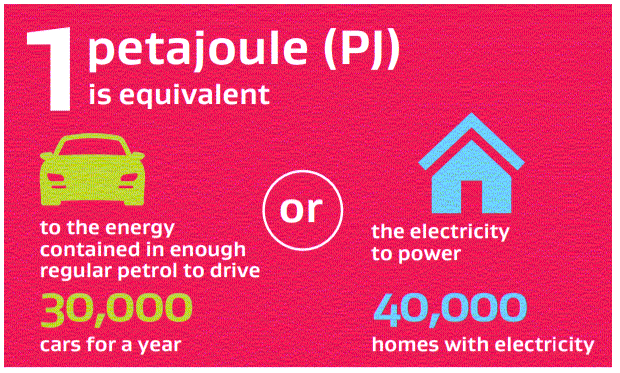Electrification of Transport

Although electrification of transport is a good idea, it is not a trivial undertaking.
Auckland Transport partners with Vector as it eyes fully electric bus fleet
Jan 2020
A fully electric fleet would prevent 70,000 tonnes of carbon dioxide being emitted into the atmosphere each year which Vector says will help improve air quality.
This policy could be signed off at the stroke of a pen as a vote catcher or from the best of motives to save the planet.
So let us crunch the numbers:
70,000 tonnes of CO2 represents approx 26,000 tonnes of Diesel
26kt of diesel is equivalent to (42GJ per tonne) 1,097,015GJ = 1PJ
Let us make a broad assumption that the inefficiencies of the on board diesel engine is equivalent to the transmission, charging and battery inefficiencies.
Thus 1PJ of extra generation is needed. At face value 1PJ of extra power generation doesn’t sound too bad compared to national generation of 144PJ.
But when you compare this to the average household annual use of (7.576MWh x 3.6GJ = 27GJ) each
1PJ is the equivalent of 37,000 households. (More households than Palmerston North district OR Far North district OR New Plymouth district)
All of the NZ windturbines together produce approx 8PJ so in 50 days they could run the Auckland bus service for a year, or 3 hours a day. Huntly produces 5,000GWh annually, equal to 18PJ
The new wind farm going in at Waipipi has 31 windturbines with a total nameplate capacity of 133MW, 455GWh or 1.64PJ output.
Personally I would expect them to only produce 300GWh or 1PJ , enough for Auckland’s EV busses.
Thus Huntly's combined output has to run for 20 days per year just to run the Auckland bus service
If Solar panels are so good every EV would come with a kit to solar charge it
May be you have bought a Nissan leaf and would like to charge it from your own solar panels
Optimistic calculations here are for a DIY system
Solar panels are about $1 per Watt nameplate capacity
They are approx 150W per square meter nameplate capacity
Actual baseload capacity is 10% of rated capacity per square meter of panel (depends on latitude and climate,
New Zealand is not called 'the land of the long white cloud' for nothing).
Baseload capacity being the averaged production thru the whole year, night and day.
Actual power generated per square meter of terra firma is 10% of baseload capacity (if you were building a solar farm) ie 1Watt per square metre.
If we assume that an EV only does 20,000km per year.
And assume the EV uses 20KWhr per 100km
So you would need 4,000KWhr per year (@ 30c per KWhr = $1200 on your power bill)
You would need 456W baseload solar generation, approx 30 square meters of panel or 4500W nameplate capacity.
Thus for $4.5K you can buy enough panel to charge a moderate use EV.
BUT (unfortunately)
You would need storage batteries to save the power for charging your EV.
Two or three days reserve for cloudy days and for harvesting the power from your panels while you are driving in the daylight
Possibly 45KWhr capacity (at least twice your EV storage capacity)
Strangely the old fashioned flooded lead acid batteries (like the 6v batteries in a golf cart, 160 year old technology) are still the cheapest battery, at less than 30c per Watt hour, they have a useful life of at least 5 years if looked after, possibly 10 years in perfect circumstances and have a reasonable scrap value.
Lithium batteries are usually at least $1 per Wh (uncertain life expectancy and scrap value).
So $15K to $45K on storage (Ouch!!)
Might be cheaper to have three nissan leafs than to buy extra batteries, use one have two on charge
On a nationwide implementation there is not much economy of scale.
With control electronics maybe a total cost of $60K for a personal EV solar charging system.
If we go for a life expectancy of 10 years that is $6K per year.
This makes the power that comes out of the socket in the wall seem quite affordable at a fifth of the cost.
BUT (again there is a but)
If everybody uses EV's then I am sure the power price will increase dramatically, in actual fact I believe the grid will fall over.
Then those who invest $60K will get the last laugh.
Just a thought exercise.
Refer also to:




